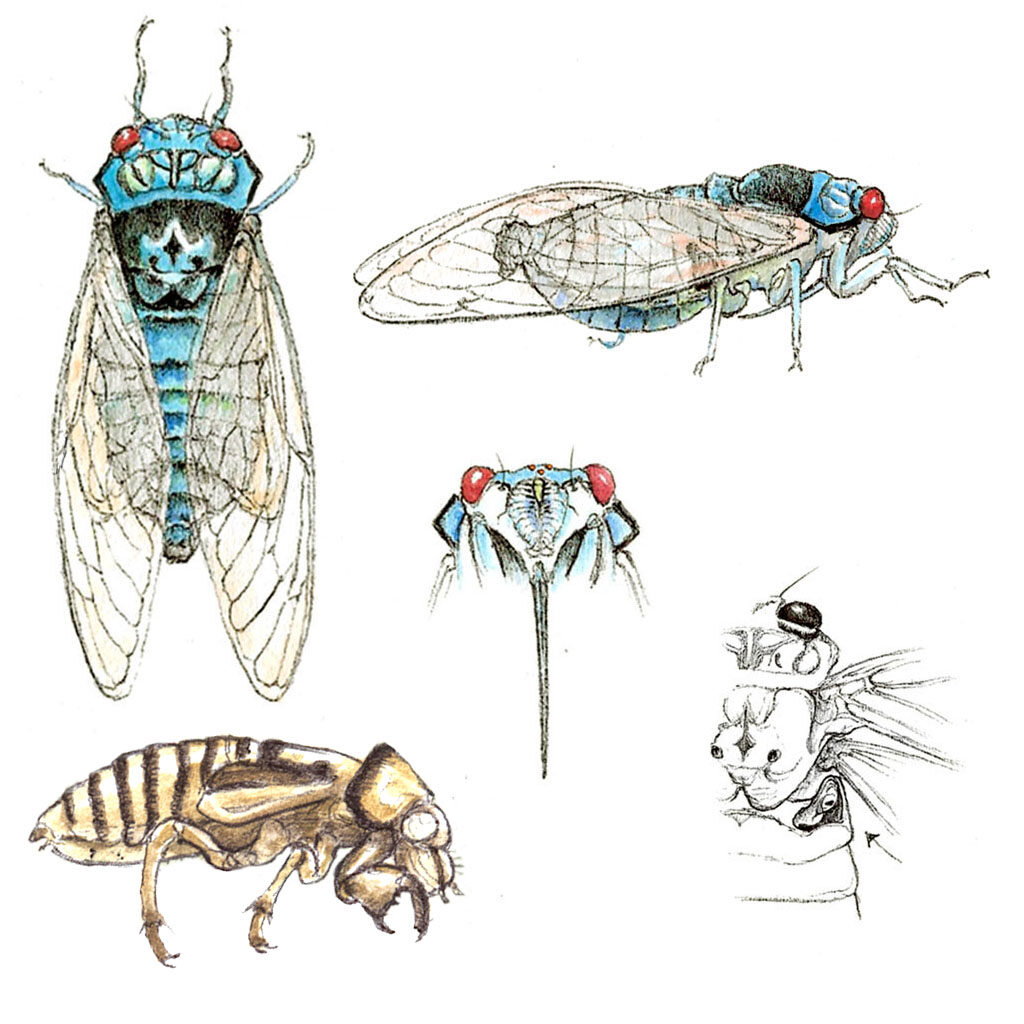Emerald Cicada

If you’ve spent much time in the American tropics, you will have heard the loud, insistent whine of cicadas in the trees during the daytime. If a cicada is calling from nearby, it can drown out normal conversation – or at least make it difficult – sort of like the howler monkeys and just as iconic.
The loudest and most beautiful cicada in the Belizean rain forests is the Emerald Cicada, known as chicharra by the locals. There are numerous Zammara species, many of which look pretty similar, but the one that lives here is turquoise with glowing red eyes, which make it a real stand-out. You’ll occasionally find one dead on the road. Maybe it sang its little heart out and expired, because it will generally be in perfect condition, a jewel-like beauty that would make a lovely brooch or pendant, although it’s a bit large, with a 2” body and the wings adding another half inch.
The male cicada calls to attract a female. Most cicada calls are similar, but the Emerald’s is outstanding, and goes a bit like this: “Tik. Tik. Tik -Tik –TikTiktiktiktiktiktktktktktkkkknnnnnnnyyyyaaaaaAAAAAAAAAAAAAAAAAA” with the sharp ticks coming faster and faster until they blend into a raucous, pulsing, nasal squall. There’s a sample of the call here at 4:47.
Cicadas calls been measured at 100 decibels, and this is probably one of them. Here’s how it’s done:
After mating and inserting eggs into a twig, the cicadas die. Upon hatching, each tiny cicada nymph drops to the forest floor, digs in, and feeds on root sap until it grows to adult size, clad in a tough tan skin (see drawing). Emerging from the ground, it climbs up a tree, splits its nymphal skin, and emerges as a fully developed cicada. It has no jaw, but a long straw mouthpart can suck tree/twig juices until it finds a mate and starts the cycle all over again.
Don’t worry, it won’t bite (no jaws, no teeth), and it won’t mess with your landscaping to any extent. Just enjoy its beautiful colors and appreciate its amazing jungle sound effects.
NOTE: the nymphal skin shown above is of an Oregon species I drew, but they all look much alike.